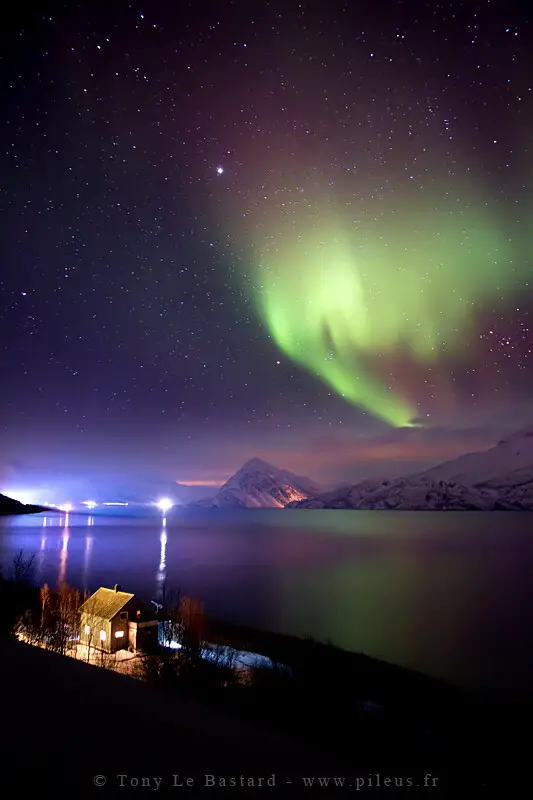|
Getting your Trinity Audio player ready...
|
The atmosphere structure of Earth, a subject of vast significance and intrigue, is a critical determinant of life as we know it. This invisible blanket encasing our planet not only sustains life but also plays an integral role in maintaining the global climate.
In this article we delve into the atmosphere structure, exploring the predominance of nitrogen and oxygen alongside other constituents like argon and carbon dioxide. We’ll also shed light on trace gases that make up minute fractions, yet have substantial effects on atmospheric dynamics.
We journey through different layers from troposphere to exosphere, each with unique characteristics influencing weather patterns and climatic conditions. Furthermore, we’ll discuss fascinating phenomena like ionospheres and auroras.
And last, for a comparative perspective on how the atmosphere structure can shape planetary environments in different ways. Venus’ runaway greenhouse effect, Earth’s optimal balance for life, and Mars’ transition from wet to dry are examined.
The Atmosphere Structure
Have you ever wondered what we breathe in every day? It turns out, our atmosphere is a cocktail of gases. National Geographic says 78% is nitrogen and 21% is oxygen. So, in effect, we are living in a giant gas balloon.
Predominance of Nitrogen and Oxygen
Nitrogen gas dilutes oxygen, preventing rapid burning. It also helps plants grow. Oxygen is essential for life.
Role of Argon and Carbon Dioxide
Other gases in the cocktail include argon (0.93%) and carbon dioxide (0.04%). Carbon dioxide gets a bad rap, but it’s crucial for photosynthesis. While plants are grateful for the sunlight.
Importance of Trace Gases
The rest are trace gases, like neon, helium, methane, krypton, ozone, and hydrogen. They may be small, but they matter.
Water vapour is also present, varying depending on weather conditions. Remember, every breath you take is mostly nitrogen.
The Boundary Between Earth’s Atmosphere and Space
If you’ve ever wondered where the sky ends and space begins, you’re not alone. Scientists have long puzzled over the division between Earth’s atmosphere and the cosmic realm. There is not a clear-cut line, but more of a gradual fade-out.
The exosphere, the uppermost layer of our atmosphere, extends up to 6,200 miles above the Earth. But if we took this literally, satellites would be playing bumper cars. So instead, NASA and most scientists agree on something called the Karman line.
The Karman line, named after physicist Theodore von Karman, sits at roughly 62 miles high and marks off outer space from Earth’s atmosphere. You’d need to travel much further for some real weightlessness. Interestingly enough, astronauts can earn their wings by crossing this imaginary boundary.
Just to put things into perspective, commercial airplanes fly approximately seven miles high, while weather balloons reach heights of twenty-one miles. So, there is more to explore beyond what we can imagine.
Layers of the Atmosphere Structure
Let us explore the complex atmospheric system that makes life on Earth possible. And the complex atmospheric levels that are necessary for life on earth’s surface and in the oceans. There is not just air above us – but an intricate system that makes life possible on Earth.
Tropospheric Characteristics
The troposphere is closest to us and contains most of our weather. This is where clouds form, rain falls, and thunderstorms occur. The temperature decreases as we go higher in this layer, which extends up to 8 miles from sea level at the poles and 12 miles at the equator.
Stratospheric Features
Moving upwards, we enter the stratosphere, home to the ozone layer which absorbs harmful UV radiation from the sun (NASA Ozone Watch). Here temperatures rise with altitude due to the absorption of solar energy by ozone molecules.
Mesospheric Conditions
In the mesosphere, the third atmospheric layer, temperatures start falling, reaching their lowest point around -90°C. It is known as the shooting star zone because meteors burn up on entering this region.
Thermosphere: Where Things Heat Up
In the thermosphere, things heat up literally. Temperatures can reach up to 1500 °C, but paradoxically, it would feel freezing cold due to its thin density. This high-energy environment hosts the International Space Station (ISS) and satellites.
Exosphere: The Final Frontier
The exosphere, the final frontier before space, is extremely thin and merges gradually into interplanetary space. Its upper boundary isn’t clearly defined, but most scientists agree that the Karman line at approximately 62 miles above Earth marks the end of the atmosphere.
The Earth’s atmosphere is composed of five main layers: the troposphere, where weather occurs; the stratosphere, home to the ozone layer; the mesosphere, known for shooting stars; the thermosphere, with high temperatures but low density; and finally, the exosphere which gradually merges into space. These layers play a crucial role in supporting life on our planet and have unique characteristics that make them fascinating to explore.
Ionisphere And Auroras
The ionosphere, is a layer of Earth’s atmosphere that seems to have been sprinkled with fairy dust. Well, not quite fairy dust, but it does contain ions and free electrons which give it some rather magical properties. The ionosphere stretches across several atmospheric layers from about 60 km to 1000 km in altitude.
This charged layer absorbs solar energy causing ions and electrons to collide with atmospheric molecules. This is where the magic happens – the collision results in spectacular light displays known as auroras.
Auroras are more commonly seen near the polar regions due to Earth’s magnetic field lines converging. In the north, they are termed Aurora Borealis or Northern Lights. In the south, the light shows are named – Aurora Australis or Southern Lights.
The natural light shows aren’t just beautiful spectacles for earthlings. They also serve an important scientific purpose by providing valuable information on how particles from space interact with the planet’s atmosphere.
Aurora Borealis & Aurora Australis: The Dancing Spirits of Polar Skies

Inuit folklore tells tales of spirits dancing across the sky during an aurora borealis display. We know these ethereal performances are caused by collisions between gaseous particles in our atmosphere and charged particles released from the sun’s surface.
But imagining them as playful spirits adds a certain charm.
Under southern skies during geomagnetic storms you might just catch sight of an extraordinary symphony performed by Mother Nature – the enchanting spectacle that is Aurora Australis.
The ionosphere, a layer of the atmosphere containing ions and free electrons, creates magical auroras when solar energy causes collisions with atmospheric molecules. These light displays, known as Aurora Borealis in the northern hemisphere and Aurora Australis in the southern hemisphere, not only provide stunning natural entertainment but also offer valuable scientific insights into how particles from space interact with our planet’s atmosphere.
The Difference between Weather And Climate
Let’s clear up a common misconception about the difference in weather and climate.
NASA, one of the big guns in planetary science, tells us that while both terms are related to atmospheric conditions, they represent different concepts. So let’s break it down.
- Weather is characterised by transitory atmospheric conditions such as temperature, humidity, precipitation and velocity of wind. It’s what prompts you to grab an umbrella when dark clouds loom overhead or slather on sunscreen during a scorching summer day.
- Climate reflects long-term trends over decades or even centuries. It isn’t concerned with daily fluctuations but focuses more on overall patterns.
The distinction between the two may seem like splitting hairs. But the difference is crucial when discussing topics like greenhouse gases and climate change.
Misinterpreting weather events for climate phenomena can lead us to misunderstand the true gravity of global warming. For instance: A single winter snowstorm doesn’t disprove global warming any more than winning the lottery proves mastery of quantum physics.
The Implications Of Misunderstanding Weather And Climate
- Misinformation: Incorrect interpretations can spread misinformation, leading to public misunderstanding of the serious issue – climate change.
- Poor Decision Making: Decisions based on incorrect information or assumptions could potentially harm environments further as we may neglect the necessary action required to acheive sustainability.
The difference between weather and climate is often misunderstood. Weather refers to short-term changes in atmospheric conditions, while climate reflects long-term trends. Misinterpreting weather events as indicators of climate change can lead to misinformation and poor decision-making regarding sustainability.
Comparative Study Of Atmospheric Conditions On Venus, Mars And Earth

You never know what you’re going to get with Planetary atmospheres. Let’s take a peek into neighbouring planets, Venus and Mars, to see what they have in their atmospheres compared to Earth.
Venus: A Runaway Greenhouse
First is Venus ‘the planetary sauna’. Venus has an atmosphere composed almost entirely of carbon dioxide (CO2) and thick clouds of sulphuric acid. The celestial body has been suffering from a severe case of greenhouse gases effect for eons.
The dense carbon dioxide layer traps heat causing surface temperatures to soar above 470°C – hot enough to melt lead.
Earth: An Optimal Balance For Life
Now come down to Earth. The giant blue marble boasts an optimal balance, with nitrogen (78%) and oxygen (21%) making up most of the atmosphere along with trace amounts of other gases including argon and carbon dioxide. This unique mix supports life by facilitating photosynthesis while also protecting us from harmful solar radiation.
It is no wonder aliens in sci-fi movies always want our planet; we’ve got the best atmosphere in the solar system.
Mars: From Wet To Dry
Last is Mars, often touted as humanity’s next frontier due to its similarities with Earth. However, don’t pack your bags yet because Mars’ once warm & wet climate has long since faded away, leaving behind only thin traces of carbon dioxide. The red planet lost most of its ancient water due to vast evaporation and space-bound escape, caused by weak gravity, over billions of years.
So until Elon Musk perfects his terraforming plans, you might want to stick around on Earth a little longer.
Understanding these three different atmospheres provides valuable insights about the formation and evolution process, which could potentially guide future interplanetary exploration efforts. Studying planets matters, because we need the knowledge to help the human race survive.
Venus has a runaway greenhouse effect with an atmosphere mostly composed of carbon dioxide and sulphuric acid clouds, resulting in scorching temperatures. Earth, on the other hand, has an optimal balance of nitrogen and oxygen that supports life while protecting us from harmful radiation. Mars, once warm and wet like Earth, now only has thin traces of carbon dioxide due to the loss of its ancient water over billions of years. Understanding these different atmospheres helps us learn about planetary formation and evolution for future exploration efforts.
FAQs in Relation to The Atmosphere Structure
What are the 7 layers of atmosphere?
The seven layers of Earth’s atmosphere are: Troposphere, Stratosphere, Mesosphere, Thermosphere, Exosphere, Ionosphere and Magnetosphere. For more information on each layer visit National Geographic.
What is the atmosphere structure GCSE chemistry?
In GCSE Chemistry terms, Earth’s atmosphere consists mainly of Nitrogen (78%), Oxygen (21%) with traces of Argon and Carbon Dioxide. More details can be found at BBC Bitesize.
Is Earth’s atmosphere 100% oxygen?
No, it isn’t. The majority is Nitrogen (78%), followed by Oxygen which makes up about 21%. Other gases make up the remaining percentage as explained in this article from NASA Climate Science.
What is 80% of Earth’s atmosphere made of?
About 80% or slightly more than that portion of our planet’s air comprises nitrogen gas. To understand better about atmospheric components read through this informative piece from SciJinks Weather Laboratory.
Final Thoughts
I hope you have enjoyed exploring the atmosphere structure, where nitrogen and oxygen prevail, supported by argon and carbon dioxide.
The atmosphere structure has 7 layers – from the troposphere where the weather gets wild, to the exosphere where satellites dance around the world.

